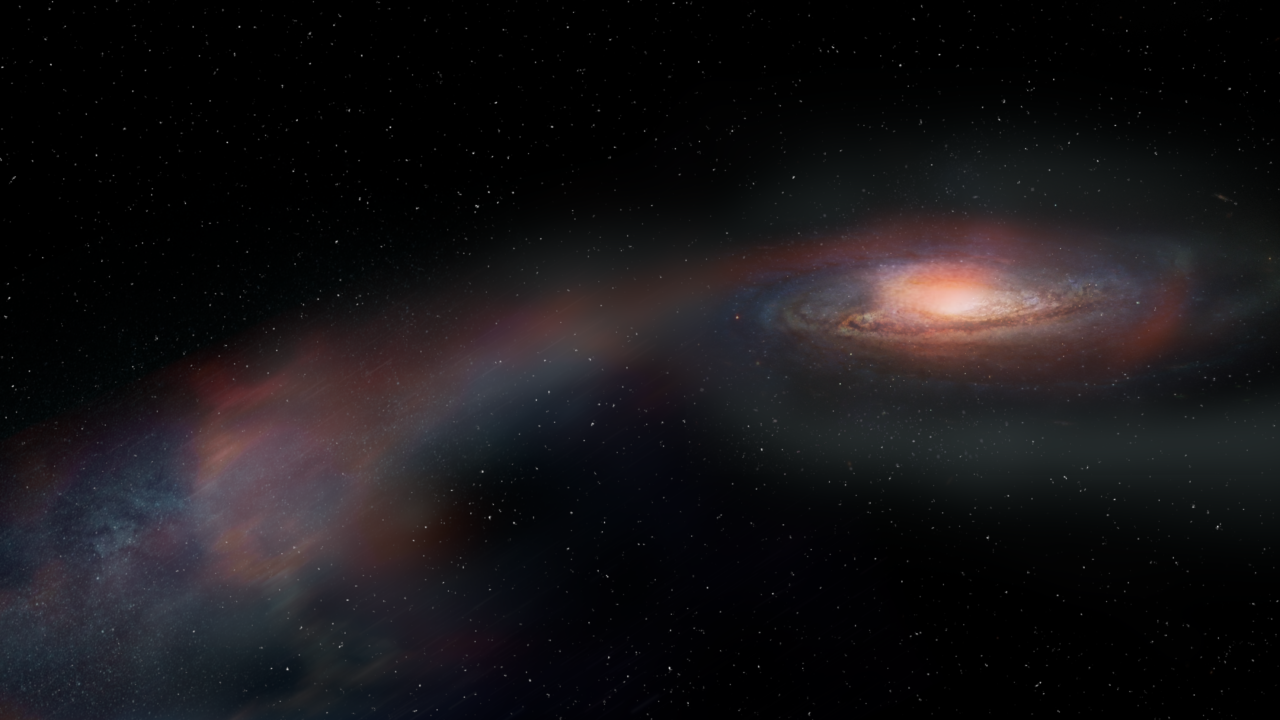Key Takeaways
- Astronomers observed galaxy ID2299, 9 billion light-years away, losing gas vital for star formation.
- ID2299 is shedding enough gas each year to form 10,000 suns, signaling its impending death.
- The galaxy formed after a collision, leaving a “tidal tail” of gas streaming into space.
- The discovery offers a new perspective on how galaxy mergers can lead to their demise by expelling gas.
- This finding may reshape how scientists understand galactic evolution and the fate of galaxies like the Milky Way.
_____________
Galaxy ID2299 loses gas equivalent to 10,000 suns annually, signaling its imminent demise
Astronomers recently observed an unprecedented event: the “death” of galaxy ID2299, located 9 billion light-years from Earth. This discovery, published on January 11 in Nature Astronomy, reveals that ID2299 is losing the cold gas it needs to form new stars at an alarming rate. Each year, the galaxy expels enough gas to create 10,000 suns. So far, nearly half of its vital gas has already escaped, while the remaining reserves are rapidly being used to form stars hundreds of times faster than in our Milky Way. Without new gas, star formation will cease, marking the end of the galaxy’s life.
The revelation that ID2299 is essentially “bleeding out” came as scientists studied cold gas in 100 distant galaxies using the Atacama Large Millimeter/submillimeter Array (ALMA) in Chile. This unexpected find sheds light on how galaxy mergers may initiate a process that drains their star-making resources.
The Role of Mergers and Tidal Tails
Researchers believe ID2299 formed following a dramatic collision between two galaxies that merged into one. This collision left behind a unique feature: a “tidal tail”—a trail of interstellar matter pulled out during the merger. Tidal tails are common in galaxy mergers, though they are typically too faint to detect from Earth. The observation of ID2299’s tail as it started to extend into space was pivotal because it showed how such features could contribute to the galaxy’s demise by leaking gas.
Previously, astronomers thought galactic death was primarily caused by winds generated by star formation or the activity of black holes at their centers. These processes can push star-forming material out into space, eventually depleting the resources needed to form new stars. However, this new finding indicates that galaxy mergers themselves can also play a significant role in gas ejection, challenging long-held assumptions. “Our study suggests that gas ejections can be produced by mergers, and that winds and tidal tails can appear very similar,” said co-author Emanuele Daddi from France’s Saclay Nuclear Research Center.
Implications for the Milky Way and Beyond
The implications of this discovery extend beyond just ID2299. Chiara Circosta, a researcher at University College London, noted that understanding these massive events is essential to piecing together the complex puzzle of galaxy evolution. This process could be a preview of what awaits our own galaxy, the Milky Way, which is set to collide with the Andromeda Galaxy in about 4 billion years. Astronomers have already observed the Milky Way releasing small amounts of cold gas into space, hinting at a potential future where it, too, might experience a similar fate.
Lead author Annagrazia Puglisi from Durham University expressed the significance of this discovery: “This is the first time we have observed a typical massive star-forming galaxy in the distant universe about to ‘die’ because of a massive cold-gas ejection.”




